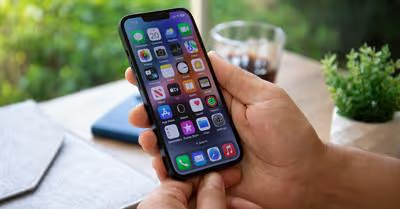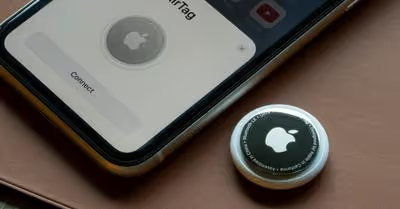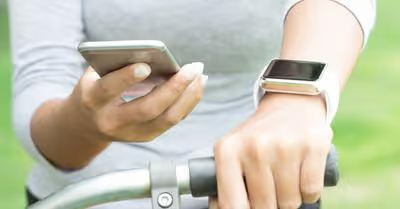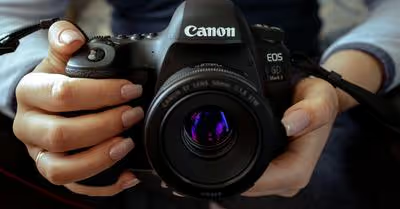Table of Contents
Why iPhone Can’t Send Pictures to Android
To fix the problem, you need to realize how iPhone to iPhone messaging is different than iPhone to Android messaging. When you use iMessage with another iPhone user, the app acts as a WiFi messaging app whenever you're connected to the internet.
In other words, it is no different to send an iMessage to an iPhone user than sending a Facebook, Instagram, or WhatsApp message. But since Android users don't have the iMessage app, what you send to them is sent as a regular network SMS.
SMS stands for "Short Message Service" and was predominantly used as a cellphone texting service in the 90s. Sending images in this format was impossible until MMS was introduced. This is a "Multimedia Messaging Service," and your cellular network provider charges you per MMS you send.
Many cellphone plans cover a number of MMS. The unlimited plans usually have unlimited MMS-sending capabilities. But iPhones can sometimes have the MMS option disabled by default. At other times, the data-saving measures can lead to accidentally turning off MMS settings.
How to Turn on MMS for iPhone
If you want to send pictures to Android without resorting to an internet texting app, you'll need to turn on MMS for your iMessages, by following these steps:
- The the gear icon to open your iPhone settings
- Scroll to the 'Messages' section
- Navigate to the 'MMS/SMS' category
- Locate the 'MMS Messaging' option
- Toggle it to 'enabled.'
If the MMS messaging is disabled and you enable it, the odds of your problem being fixed are nearly 100%. But if you find that the MMS messaging was already enabled, then the issue is most likely a glitch in the iMessaging app or the phone's network access that's preventing MMS initiation even though the settings allow it.
Disabling Airplane Mode: A Possible Solution
Before you assume that your messaging app has a glitch, you should check whether the iPhone is on airplane mode. Airplane mode can disable network access, which prevents MMS and SMS messages from going through. This is highly unlikely to be the problem but is worth checking.
- Open settings from the home screen of your iPhone
- Toggle the airplane mode off if it is on.
If you find that the phone is indeed on airplane mode, then this should fix the problem. But you'll likely notice that the phone's airplane mode is already turned off. This will confirm that your iMessage app is indeed glitching.
How to Fix iMessage to Android Photo Glitch
Once you're sure that your iPhone's MMS messaging is enabled, the only explanation left for its inability to send pictures to Android is that the messaging app is glitching.
To fix this, you need to force reboot your iPhone. This is also called a hard restart. Here's how you do it on new iPhone models:
- Press the volume down button and hold it
- Press and hold the power button
- Wait for the apple logo to appear
- Let the phone reboot
For older models, you need to press the lock button and the home button until the logo appears. Once the phone has rebooted, try sending a lower resolution picture to the Android. If it still doesn't go through, then the problem is not in the size of the picture or the app's task overload. But it still could be in your cellphone's reception.
Check/Fix Reception Problems
Reception problems can also interfere with MMS capabilities. To test if you have network problems, turn off your mobile data and your WiFi, then try sending a picture to someone with an iPhone.
If the picture doesn't go through, then the issue is not that the recipient has an Android or an iPhone. The issue is that your MMS sending capabilities are stunted. Next, you should send a text message to a friend with an iPhone.
If the message doesn't go through, your cell services provider's network coverage is poor. If the message goes through, then the problem is in the size of the photo you're trying to send. Here's how you can fix that.
Send Pictures via Internet Platforms
This is the quickest and cheapest way to send photos from an iPhone to an Android. However, it is often overlooked because of the convenience of iMessages.
To send high-quality photos from an iPhone to an Android, you need to use an app like DropBox or G-Drive. You can also send medium-quality photos through Facebook Messenger, Whatsapp, and the LINE app. Photos sent from iMessage to Android phones don't go through the internet.
It is understandable if you would still like to get your iMessage-to-Android photo-sending fixed. For that, the only option that remains is to fix your phone's meta settings. Meta settings refer to the settings outside the iMessages and Network-specific apps.
Meta Settings have to do with the overall phone's software and settings chain. These settings get messed up when there is a pending software update or when you accidentally mismanage one program's settings, and it affects everything else.
Update Your iOS
Your phone's meta settings can lag behind the app updates' requirements. To fix this, you should update your iOS by following these steps.
- Open your iPhone's settings from the home screen
- Tap General to open general settings
- Tap 'Software Update'
- Click 'Download and Install' if an update is available.
Factory Reset Your iPhone
If you notice that there are no pending updates and you have done everything to facilitate MMS messaging, you need to Restore Factory Settings on your iPhone. Please note that this isn't a solution for fresh iPhones. If you have bought your phone recently, it is pretty close to its factory settings, and wiping your data is not worth it. And before you factory reset your phone, you must backup your data.
To factory reset your iPhone, you should follow these steps:
- Open settings by tapping the gear icon
- Tap General
- Go to Transfer or Reset Your Phone
- Tap Erase All Content and Settings
This fixes almost every software and program-related issue. If you still can't send MMS messages, then the issue might be in the hardware, so you should take your iPhone for repair. Apple iPhone is supposed to allow messaging with Android even though it doesn't happen over WiFi or mobile internet. It happens over traditional SMS and MMS channels. Whenever MMS is turned off, you'll be unable to send photos to an android.
Recent Articles

















